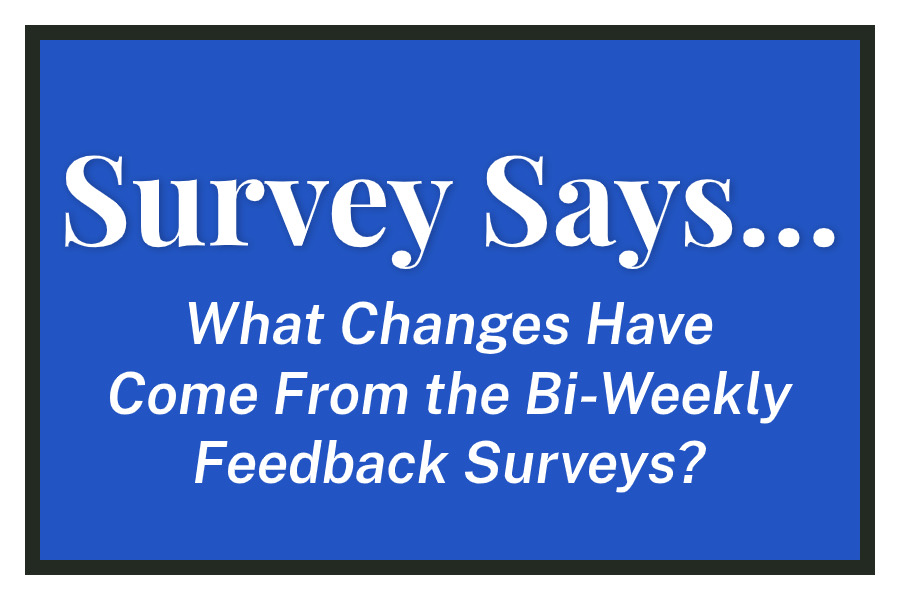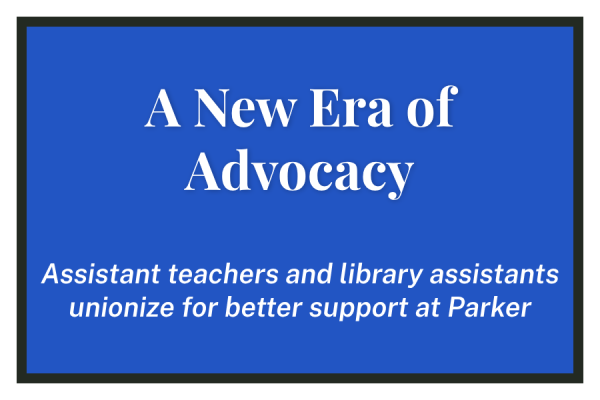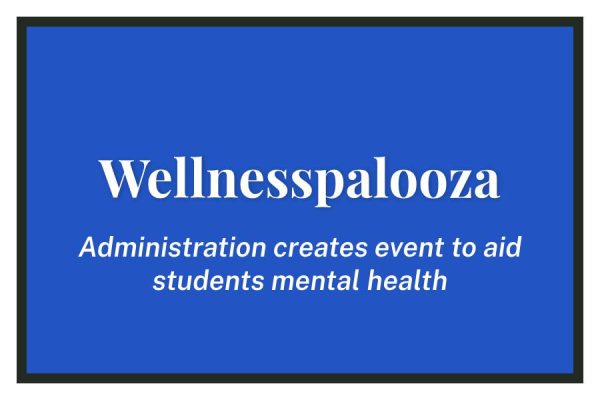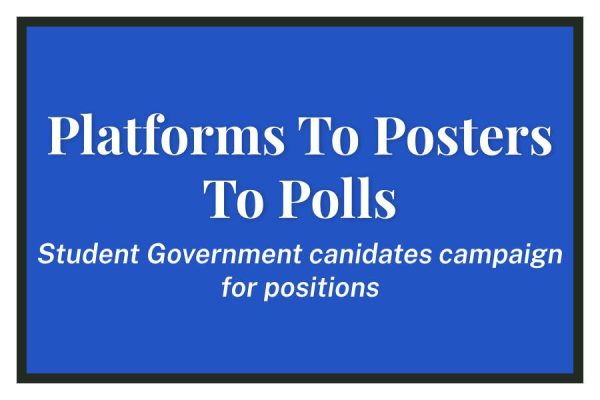Survey Says…
What Changes Have Come From the Bi-Weekly Feedback Surveys?
Every two weeks, nearly two-thirds of the Upper School student body and just over half of the K-12 faculty select buttons answering questions from what can be improved in the online classroom setting to how many hours of homework they get per day. What happens to the Google-form after they click the big purple submit button is less known among respondents.
The Upper School administrative team created the surveys in the spring of 2020 when remote learning first commenced in order to gain feedback and assess the Parker community’s educational experience. They were split into three categories: online learning, the schedule, and community connection. While they aren’t required, it’s strongly encouraged that both students and faculty respond.
“[The surveys] are to have the ability for the student voice and teacher voice to actually be factored into the decisions that the administration is making that affect all of our lives,” Middle and Upper School Director of Studies Sven Carlsson said. Carlsson and Upper School Dean of Student Life Joe Bruno read through each survey response multiple times, first in the Google Forms summary and again on a master spreadsheet where it’s analyzed and discussed.
While during this past spring changes to the schedule and class material were seen almost weekly, now that most of the major kinks have been worked out, many of the resulting adjustments are happening behind the scenes. Some students feel like no change is happening at all.
“I feel like there needs to be more ways to help the students with their mental health,” junior Minnie Dennis said. “That doesn’t mean that they should continue to let the students get to the point where their mental health is failing then try and host an activity to help with stress, but they should be working to minimize stress from the very start.”
According to the CDC, 70 percent of adolescents aren’t getting enough sleep. According to Parker’s surveys, 90 percent of the Upper School Student Body is getting under the recommended amount. Carlsson and Bruno have also noticed that more and more responses are reporting headaches and Zoom-fatigue.
Another Upper School student, who wishes to remain anonymous, agreed that the administration should direct more of their focus towards mental well-being and how to respond to the survey results in a substantial manner. The faculty heading the surveys see the lack of major change differently.
“This year, the fact that we haven’t changed the schedule came from the students as weird as that sounds,” Carlsson said. “We actually thought we needed to change the schedule, and the students were like overwhelmingly don’t touch it.” Because the data received from the surveys is never completely unanimous, Carlsson noted that the entire Student Body won’t always be happy with the decisions being made.
The Head of Upper School Justin Brandon agreed that nothing major has had to shift so far. “At this point, I guess I think it’s fair to say that we were still kind of absorbing the information from the surveys,” he said. “We haven’t made any major significant changes to the schedule.”
Not only does the Upper School leadership look at the surveys to discuss possible changes, but they also factor in information gathered from feedback sessions run by the student body such as Senate, Small Groups, and Plenary. Student feedback regarding specific teachers is best received in ok response to the question, “Anything else you’d like to share with us, about anything at all?”
Surveys sent out to the faculty cover a similar range of topics regarding overall mood but also focus more on what they’re doing in class to improve the student learning experience. Last year, faculty were able to view student responses to the surveys on a website created by Carlsson and Bruno. Common themes were brought up and discussed in meetings. This year, however, the data hasn’t been made public yet. Carlsson has been working to fill in the website, saying that “the intent is there,” and he “just needs to upload it.”
As of now, the survey system will continue to run in the same fashion and be sent out once every other week. More significant changes are soon to come as new feedback rolls in.
“The survey means a lot to us,” Carlsson said. “All of our inboxes are on fire all the time, but I think the surveys are how most of it gets communicated and they’re just one of the most reliable ways.”








